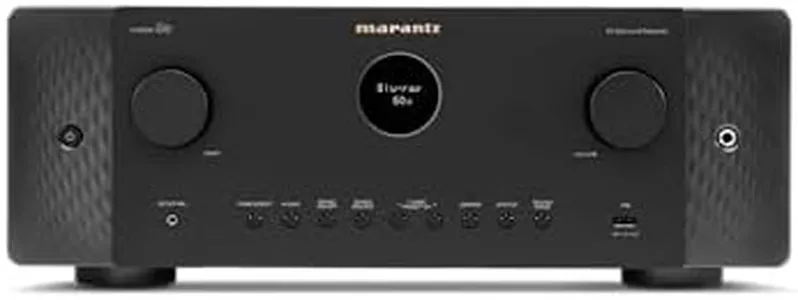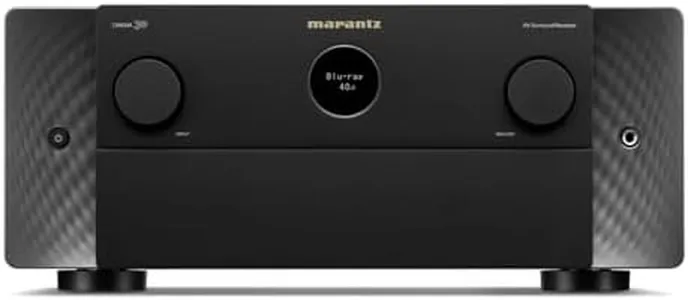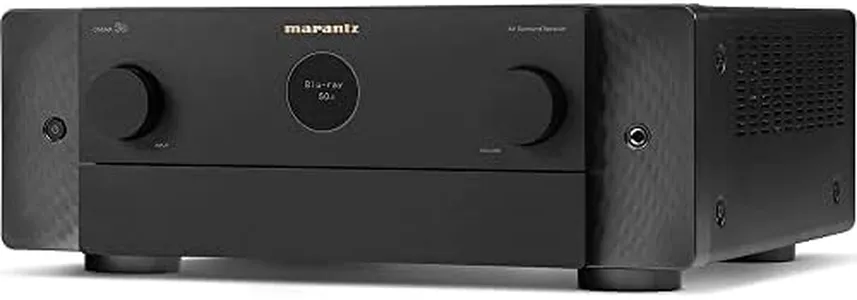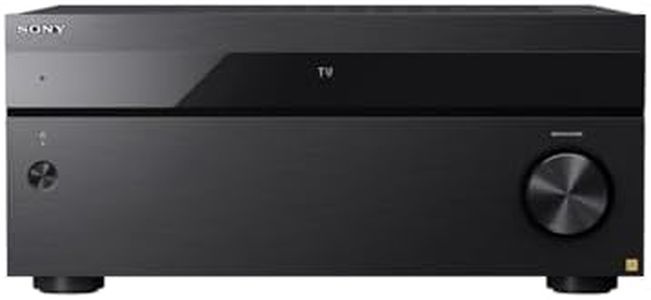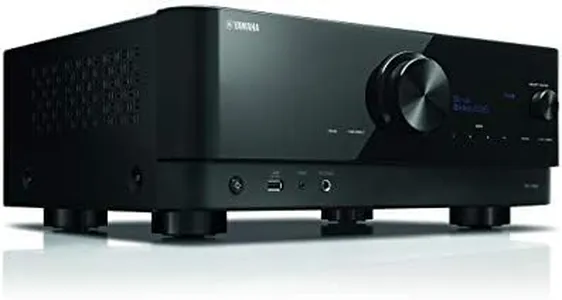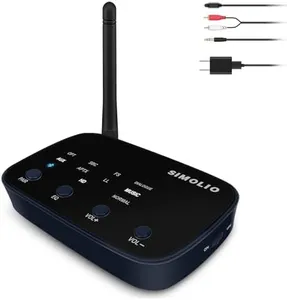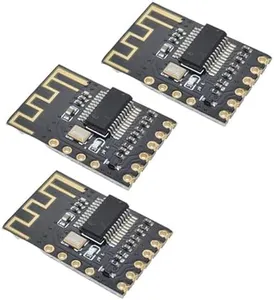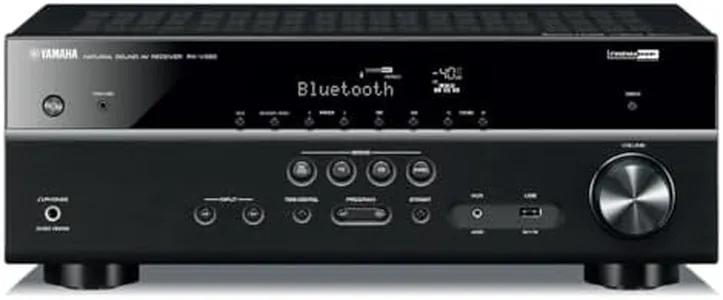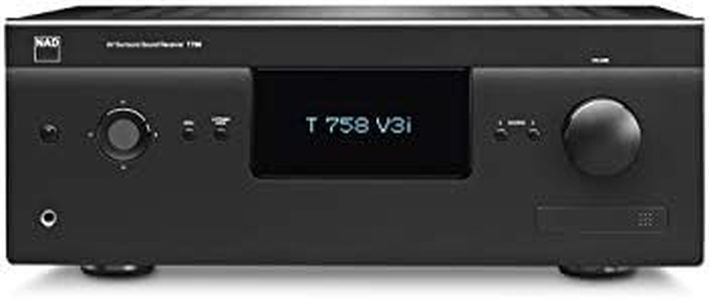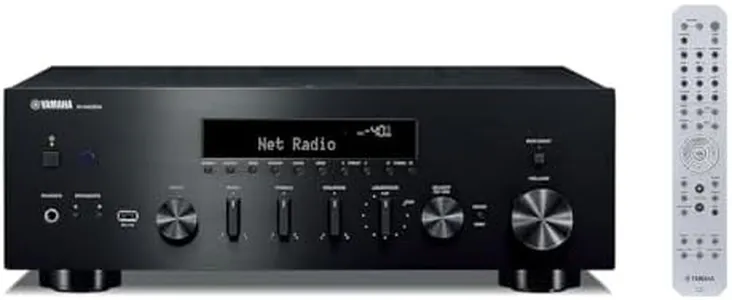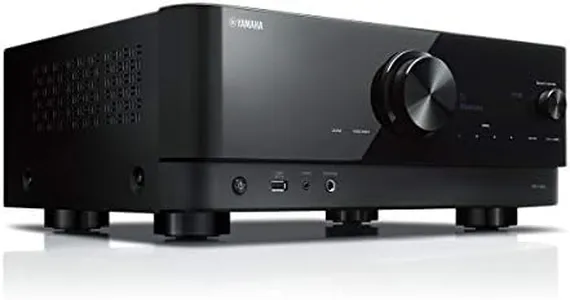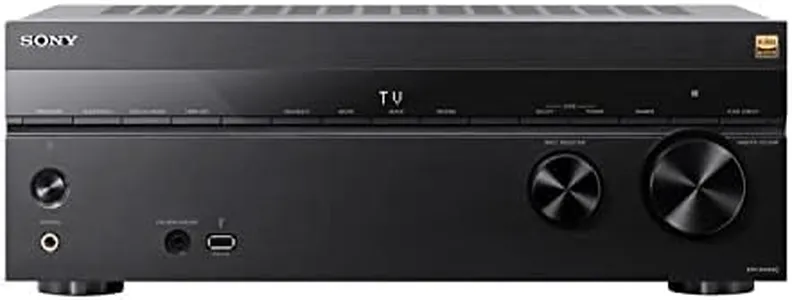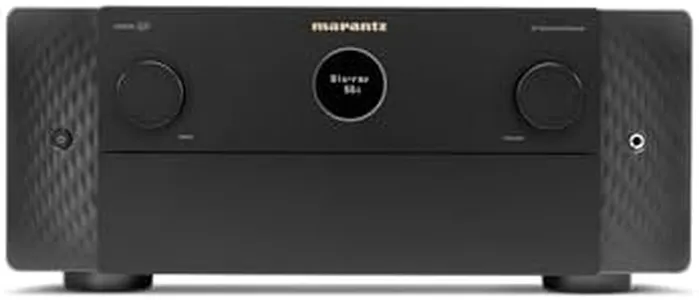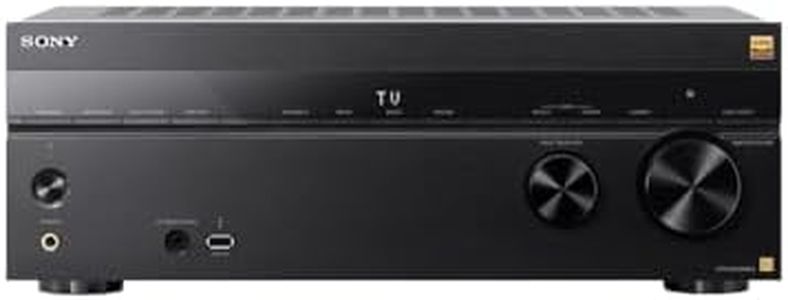10 Best Home Theater Receivers 2026 in the United States
Our technology thoroughly searches through the online shopping world, reviewing hundreds of sites. We then process and analyze this information, updating in real-time to bring you the latest top-rated products. This way, you always get the best and most current options available.

Our Top Picks
Winner
Marantz Cinema 60 7.2-Ch Receiver (100W X 7) - 4K/120 and 8K Home Theater Receiver, Built-in Bluetooth, Wi-Fi & HEOS Multi-Room, Supports Dolby Atmos & DTS:X
Most important from
121 reviews
The Marantz Cinema 60 7.2-Ch Receiver is a robust addition to any home theater setup, especially for those looking for high-quality audio and video experiences. With 100W per channel and support for both Dolby Atmos and DTS:X, it offers immersive 3D surround sound. Additionally, it includes Dolby Height Virtualization and DTS Virtual:X, allowing for an overhead sound experience even without height speakers. This makes it versatile for various speaker setups, whether you have a full 7.1 system or a simpler 2.1 configuration.
The receiver also excels in video processing, supporting 8K/60Hz and 4K/120Hz pass-through, along with various HDR formats like Dolby Vision and HDR10+. Gamers will appreciate features like QFT, QMS, VRR, and ALLM for a lag-free experience. Connectivity is another strong suit, with 8 HDMI ports (including 3 8K UHD inputs), subwoofer outputs, a phono input, analog and digital inputs, USB, and network connections via Wi-Fi and Bluetooth. The built-in HEOS technology allows for multi-room streaming, and voice control compatibility with Alexa and other smart assistants adds convenience.
The Audyssey MultEQ XT32 automatic room calibration ensures that setup is straightforward and that sound quality is optimized for your space. However, potential drawbacks might include its complexity for those unfamiliar with advanced home theater equipment, and the premium price point may not be justifiable for casual users. This receiver is best suited for enthusiasts and those who prioritize high-end audio and video capabilities in their home theater systems.
Most important from
121 reviews
Marantz Cinema 30 11.4 Channel 8K Home Theater Receiver with Dolby Atmos & IMAX Enhanced Audio (Black)
Most important from
8 reviews
The Marantz Cinema 30 11.4 Channel 8K Home Theater Receiver is a high-end option designed for those looking to enhance their home entertainment experience. With support for Dolby Atmos and IMAX Enhanced Audio, it provides immersive sound quality, ideal for movie enthusiasts and audiophiles. The 13.4 surround sound configuration ensures robust and dynamic audio performance, which is complemented by its substantial power output.
It features an extensive range of connectivity options including 10 HDMI ports, Bluetooth, and USB, making it versatile for various devices like laptops and other multimedia equipment. Additionally, the receiver supports advanced video processing with HEVC (H.265) encoding, ensuring clear and crisp visuals for 8K content. The multiroom feature and app control add convenience, allowing users to manage audio settings and playback throughout different rooms seamlessly.
The unit's weight of 49.5 pounds and dimensions might make it cumbersome to install or move. This receiver's user interface and room calibration capabilities can be assumed to align with Marantz's reputation for quality. Its high ranking and excellent customer reviews make this product a strong contender for those seeking a premium home theater experience, although its size and potential complexity may be daunting for some users.
Most important from
8 reviews
Marantz Cinema 50 9.4-Ch Receiver (110W X 9) - 4K/120 and 8K Home Theater Receiver (2022 Model), Built-in Bluetooth, Wi-Fi & HEOS Multi-Room, Supports Dolby Atmos, DTS:X Pro, IMAX Enhanced & Auro 3D
Most important from
40 reviews
The Marantz Cinema 50 is a powerful 9.4-channel home theater receiver delivering 110 watts per channel, which means it can fill a medium to large room with rich, detailed sound. It supports advanced surround sound formats like Dolby Atmos, DTS:X Pro, IMAX Enhanced, and Auro 3D, making it excellent for immersive movie and gaming experiences. The receiver stands out with strong video capabilities, including 8K and 4K pass-through at high refresh rates, plus support for Dolby Vision and HDR formats, which ensures sharp, vibrant images on compatible TVs.
Connectivity is comprehensive, featuring 9 HDMI ports, Wi-Fi, Bluetooth, and built-in HEOS for easy multi-room music streaming from services like Spotify or Pandora. The inclusion of Audyssey MultEQ XT32 room calibration helps tailor the sound to your specific space, simplifying setup and improving audio performance. The user interface is designed to be straightforward, with an on-screen graphical menu and voice control compatibility via Alexa, Siri, and others for hands-free operation.
On the downside, while it offers virtual height effects without extra speakers, true 3D sound with height channels will require additional speakers, which adds to cost and complexity. Also, its weight and size mean it needs a dedicated, sturdy spot in your home theater setup. This receiver is well suited for enthusiasts who want top-tier audio and video performance combined with modern streaming features, although beginners might find the number of options a bit overwhelming at first.
Most important from
40 reviews
Buying Guide for the Best Home Theater Receivers
Choosing the right home theater receiver can significantly enhance your home entertainment experience. A receiver acts as the central hub of your home theater system, connecting and managing all your audio and video components. To make an informed decision, it's important to understand the key specifications and how they align with your needs and preferences.FAQ
Most Popular Categories Right Now
